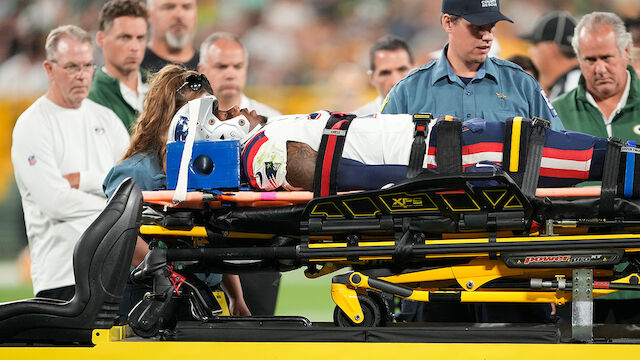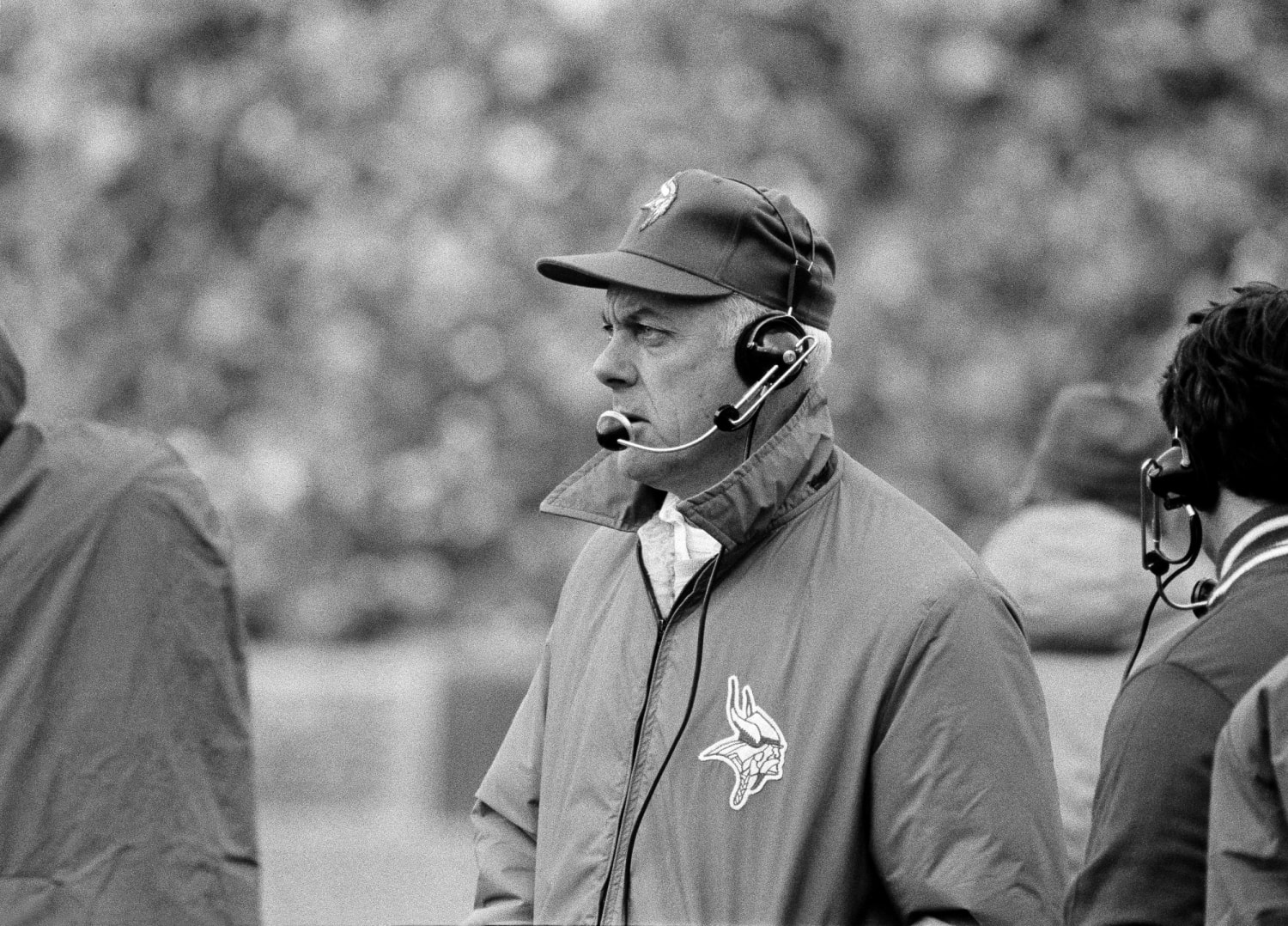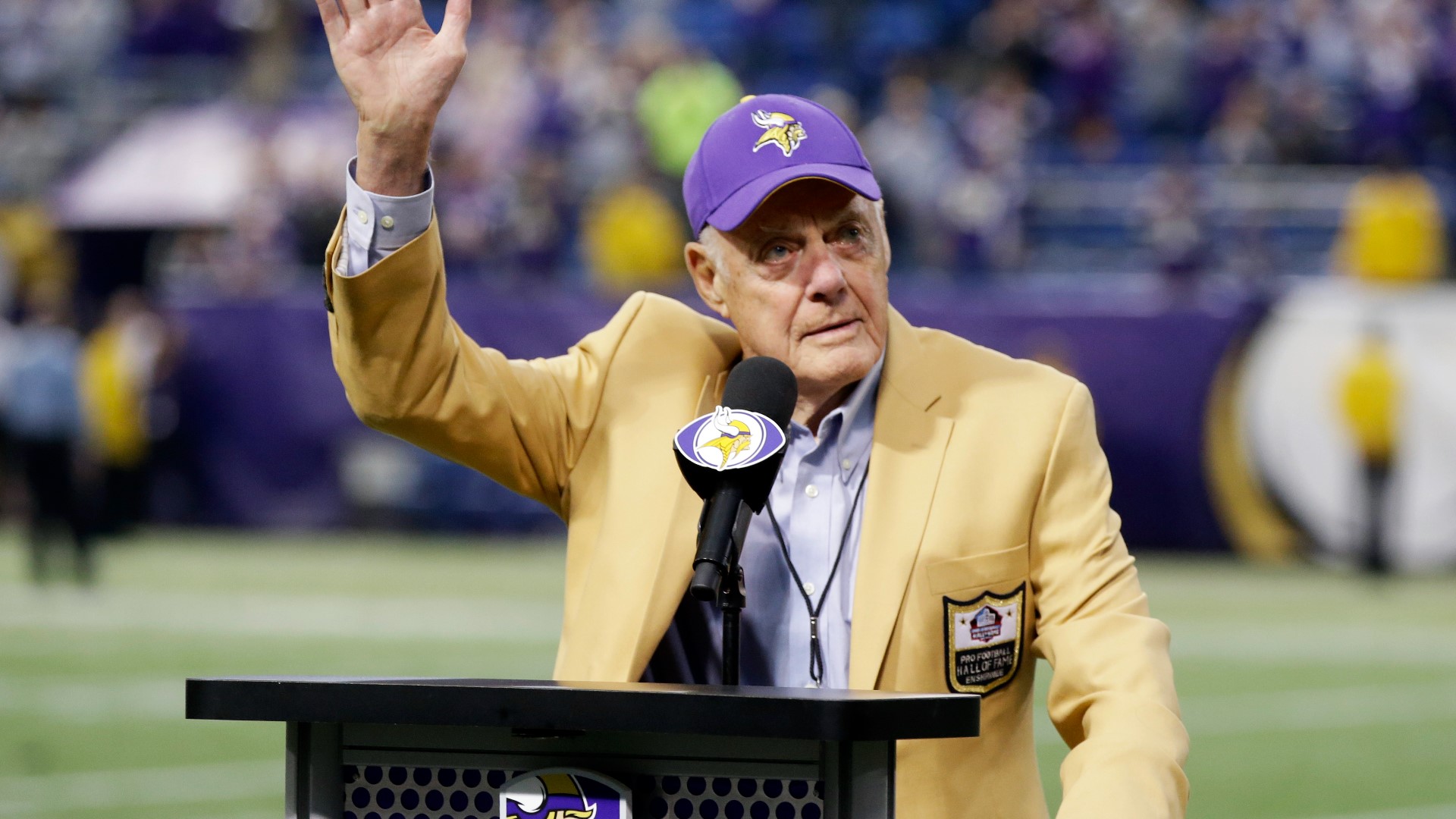
Minnesota Vikings Hall of Fame coach Bud Grant passes away at age 95
MINNEAPOLIS (AP) — Bud Grant, the stoic and demanding Hall of Fame coach who took the Minnesota Vikings and their mighty Purple People Eaters defense to four Super Bowls in eight years and lost all of them, died Saturday.
He was 95.
The Vikings announced Grant’s death on social media.
“We are absolutely devastated to announce legendary Minnesota Vikings head coach and Hall of Famer Bud Grant has passed away this morning at age 95,” the post said.
“We, like all Vikings and NFL fans, are shocked and saddened by this terrible news.
” Wearing his trademark purple Vikings cap and a stone-faced demeanor, Grant’s steely sideline gaze became synonymous with his teams.
He was a mainstay among the coaches of his era, a decorated group that included Don Shula, Tom Landry, Chuck Noll, John Madden and Hank Stram.
However, Grant had little interest in awards.
“The only reason a head coach gets credit for something good is because he gets a lot of criticism when things go wrong,” Grant once said.
“I think the whole secret is to react neither to good nor to evil.
» He guided the Vikings from 1967 to 1985, after a one-year hiatus in 1984, en route to a 158-96-5 record with 11 sectional championships in 18 seasons.
He went 10-12 in the playoffs.
When he retired, Grant was eighth on the NFL’s all-time wins list.
After replacing fellow Hall of Famer Norm Van Brocklin, Grant assembled a venerable defensive line nicknamed the Purple Cannibals.
The squad – whose motto is “Meet the Quarterback” – was joined by a high-powered offense that helped Minnesota reach the Super Bowl in 1970, the last edition of the big game before the AFL-NFL merger .
The heavily favored Vikings fell 23-7 to Kansas City, setting the stage for an infamous streak of title-game losses to Miami, Pittsburgh and Oakland in a conference known to be poor poor after the 1973, 1974 and 1976 seasons.
READ MORE:
“If you want to succeed, maybe survive is a better word,” Grant said in his 1994 Pro Football Hall of Fame induction speech in Canton, Ohio.
“You have to deal with loss.
You die every time you lose, but you have to get over it.
An avid outdoorsman who spent many off-seasons on fishing trips to Alaska or hunting trips to Arizona, Grant was also a successful coach in the Canadian Football League and became the first person elected to the CFL and NFL Hall of Fame.
He won four tournament championships during his 10 years in Canada.
Harry Peter Grant Jr.
was born on May 20, 1927 in Superior, Wisconsin, and his mother gave him the nickname Bud.
He overcame polio as a child and became a three-sport star in high school.
He discovered coaching early after entering the Army in 1945 and played on a team at the Great Lakes Naval Station outside Chicago managed by Paul Brown, who would continue his career at the Temple of Fame as a NFL coaches, executives and owners.
From there, Grant played football, basketball and baseball at the University of Minnesota, a nine-time letterman who was drafted by both the NBA and NFL.
He first became interested in basketball, playing two seasons for the Minneapolis Lakers and winning a title with them in 1950.
But it was in football that Grant truly excelled, first with Philadelphia Eagles.
He finished second in the NFL with 56 receptions and 997 yards in 1952, before a contract dispute sent him to Winnipeg in the CFL.
After being a two-way player for the Blue Bombers, throwing five interceptions in one playoff game, he bRon Yary ecame their coach and took them to six Gray Cup games – winning the championship in 1958.
, 1959, 1961 and 1962.
Grant won 102 games as a CFL coach.
This sparked the interest of the Vikings, who lured him across the border in 1967.
With stars including Fran Tarkenton, Carl Eller, Alan Page, Paul Krause and – all are both members of the Pro Football Hall of Fame – Grant led the Vikings to 10 Central Division championships in 11 seasons.
Disciplined to the core and focused on sharp mental focus, Grant went so far as to have his players practice standing at attention during the national anthem.
He was famous for taking the Vikings out in the cold winter to practice and banning sideline heaters during games at Metropolitan Stadium.
On January 10, 2016, when the Vikings hosted the coldest game in franchise history in the first round of the playoffs against Seattle, at the university’s outdoor stadium in When their building was under construction, Grant was honorary captain.
He strolled to the pregame coin toss, wearing a Vikings hat and short-sleeved purple polo shirt, looking ready for a round of golf despite the minus-6 degrees Fahrenheit and minus-25 wind chill.
Grant retired after the 1983 season, replaced by Les Steckel, whose fiery approach was the opposite of his calm predecessor and went 3-13.
Grant returned for one season, a 7-9 finish, before longtime offensive coordinator Jerry Burns was promoted to the top job.
Though Grant was done with coaching then, his influence on his team and city remained.
Grant continued living in the same suburban home he bought upon his 1967 arrival, in Bloomington less than 10 miles from Metropolitan Stadium.
He became an ambassador of sorts for the Vikings in the community, sometimes lending his voice in the lobbying effort to replace the Metrodome, where the team played from 1982-2013.
He hunts and fishes

Leave a Reply